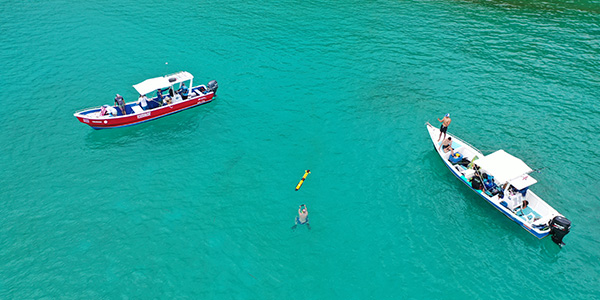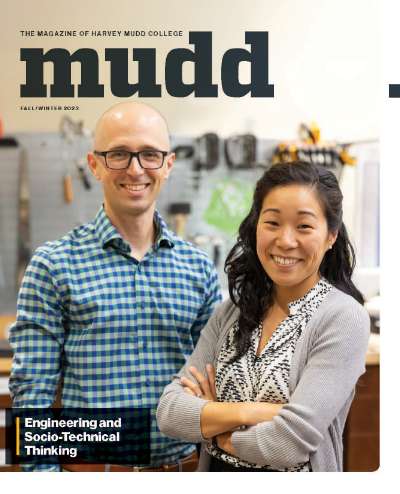NSF Supports Interdisciplinary Collaboration
September 28, 2022
The undeveloped shoreline of Bahia Santa Elena, Costa Rica, is a breeding area for several marine species, including dolphins, whales and turtles, as well as the endangered whale shark and several species of rays. For two weeks last summer, it was also the worksite for a Harvey Mudd College summer research project.
Yoo-Jin Hwang ’22, Caitlyn Ossa SCR ’24, Declan O’Neill ’23 and Chris Herrera ’24 were among 18 students who spent their summer doing research to extend the development of autonomous underwater vehicle (AUV) technology and apply it to a marine life monitoring study in Costa Rica. The project is part of a National Science Foundation-funded collaboration between HMC visiting scholar and grant PI Professor Chris Clark, Professor Chris Lowe (Cal State University Long Beach), Professor Mario Espinoza (University of Costa Rica) and their students and Alberto Soto, a postdoctoral fellow in HMC’s Program for Interdisciplinary Computing.
“This research contributes to both underwater robotics and marine biology,” says Clark. “The development of a multi-AUV system that uses single hydrophone receivers for active tracking of nurse sharks and sea turtles within their habitat generates new objective function formulations, new algorithms to optimize such objective functions, new approaches to decentralize the algorithms across multiple AUVs and new methods of systems integration.” Clark notes that much of the work was performed earlier at Bernard Field Station’s pHake Lake in Claremont, California.
The fine-scale movement patterns of nurse sharks and sea turtles have been largely unknown. Also, their habitats have never been mapped, as the nation of Costa Rica has less access to some of this technology. Combining these two new data sets, motion patterns and habitat maps, helps answer some of the most basic but unanswered questions regarding how these species use their habitats.
“My favorite aspect about the experience was the collaboration between CSULB and University of Costa Rica, whether it was fieldwork or immersing ourselves in conversations to learn more about each other’s cultures,” says Hwang. “I really enjoyed animal tagging—sharks, turtles and stingrays—and exploring Costa Rica on land and in the water.”
An engineering major, Hwang graduated in May. She assisted in the particle filter for shark tracking, building and testing hydrophone cowling design, briefly working on proportional control, and electrical debugging to integrate the hydrophones into the robot.
O’Neill, also an engineering major, spent the summer in Clark’s lab working on a control system to steer the AUV along a path defined by GPS-points so that the team would be able to run missions off of their own code. “The hope was that this would give us more flexibility than using the provided software to run missions,” he says. “I also worked on a side project to help some students at CSULB, writing some computer vision along with a particle filter to track manta rays and other sea life in drone footage so they can extract position and velocity information and use that to characterize the rays’ behavior.”
In addition to the trip to Costa Rica, O’Neill says his favorite aspect of the project was the fieldwork performed on the boats. “It was nice to see the impact of what we had been working on all summer coming together,” he says, “and working with the sharks was super fun. Also, the sea turtles were just very cute.”
Read the team’s ICEX 2022: Costa Rica blog and view photos, including a few photos of very cute sea turtles. Visit the HMC Department of Engineering Lab for Autonomous and Intelligent Robotics website.
